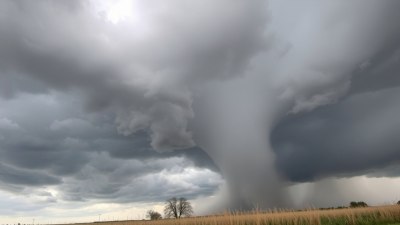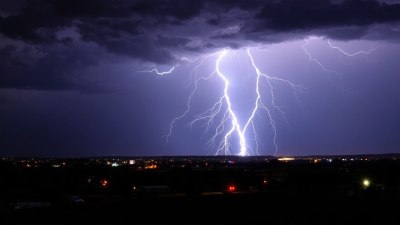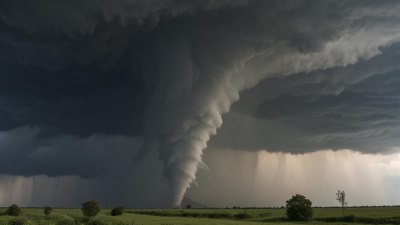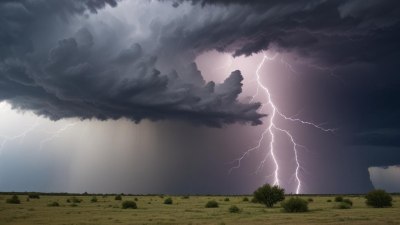Why the First Day of Fall Never Actually Feels Like Fall
Explore why the official start of fall often doesn't match the seasonal ambiance in nature.

When the calendar turns to September 22 or 23, marking the official beginning of autumn, one would expect an immediate shift in the environment. However, most people can agree that the first day of fall rarely feels like fall at all. This phenomenon can be attributed to several factors including climatic conditions, cultural perceptions, and biological responses. Understanding these dynamics can enrich our appreciation of seasonal transitions.
Seasonal Expectations vs. Reality
As soon as summer begins to wane, various signs signal the impending arrival of fall: pumpkin spice lattes invade coffee shops, vibrant hues of red and orange begin to appear in advertisements, and parents prepare for back-to-school routines. These cultural markers shape our expectations for what the season should feel like. Yet often, as September approaches, the weather remains stubbornly warm, catching many off guard. This disconnect between cultural anticipation and natural reality prompts further investigation as to why.
Weather Patterns and Climatology
The atmospheric conditions that influence seasonal changes often shift gradually rather than immediately as the fall equinox arrives. One primary reason for this slow transition lies in the meteorological perspective. Meteorology categorizes seasons based on months rather than the astronomical calendar. In many regions, summer heat can persist well into late September and even October.
Geographically, areas with particular climates can experience significant delays in cooling temperatures. For instance, in the southeastern United States, the heat can hang around for weeks or even months after the start of autumn. Even in northern regions, early autumn can feature anomalies referred to as “Indian Summers”—periods of unseasonably warm weather that occur after the first significant cool spell. Such weather changes can muddle our sense of the season.
The Role of Latitude
Latitude plays a crucial role in how we experience seasonal changes. Regions closer to the equator have less variation in temperatures throughout the year. In contrast, locations at higher latitudes experience more pronounced seasonal transitions. This can mean that for some individuals, the onset of fall can feel abrupt and dramatic due to sudden temperature drops, while for others, the changes are far more gradual. For instance, residents in New England might note distinct changes in leaf color sooner than those in southern regions.
Psychological Perceptions of Seasons
Our psychological relationship with seasons also impacts how we perceive their onset. The concept of 'seasonal affective disorder' (SAD) highlights how changes in light and climatic conditions can influence mood and emotional wellbeing. Many associate the feelings of comfort, warmth, and relaxation with summer, so when fall approaches, there can be a bittersweet sense of loss. This feeling can amplify the perception that fall is slow to arrive, even when environmental signs suggest otherwise.
Biological Rhythms
Humans are inherently connected to the seasons, influenced by biological rhythms governed by circadian cycles and other innate processes. Studies have shown that exposure to prolonged sunlight and warmth can alter our physiological responses, affecting everything from sleep patterns to mood. As such, the heat still lingering at the start of autumn can inhibit our ability to mentally transition into the new season. The human body's internal clock may take time to adjust, contrasting with the calendar's designation.
Cultural Celebrations and Traditions
Cultural practices and traditions can also define our perception of seasonal arrival. Various festivals and events celebrate the fall season worldwide, from harvest festivals to Halloween celebrations. Yet, during the initial days of fall, people might still be enjoying summer activities, leading to a cognitive dissonance. This collision of summer festivities and autumn expectations can contribute to the feeling that fall hasn't truly begun.
The Impact of Climate Change
Another contemporary topic affecting season perceptions is climate change. Weather patterns are shifting due to a warming planet, and many regions have experienced prolonged heat waves, heavy rainfall, or unpredictable weather. This changing climate can disrupt historical patterns, leading to telegraphed changes in seasons. As a result, we may find ourselves facing subjectively skewed seasonal experiences. In places where summers are lengthened as fall becomes harder to distinguish, individuals might question the markers we once relied on.
Personal Experiences and Regional Differences
Personal experiences significantly shape how we engage with seasonal changes. Family traditions, local weather, and community culture can profoundly impact our perception of when a season begins. For instance, moving from a cooler climate to a warmer one might greatly influence what you deem an appropriate temperature to reflect autumn's arrival. Thus, a subjective nature can complicate our understanding of when fall truly begins for each person.
Conclusion: Embracing the Transition
Ultimately, understanding why the first day of fall never truly feels like fall can enhance our appreciation for the complexities of nature and culture. Rather than focusing solely on the calendar for cues regarding seasonal change, a more rounded perspective that considers environmental, psychological, and cultural aspects can allow individuals to enjoy the gradual transition toward autumn. Instead of lamenting the continuous summer temperatures, embracing the feast of flavors, sights, and experiences that fall brings can enrich this seasonal journey, reminding us that nature operates on its timeline, not simply ours.











